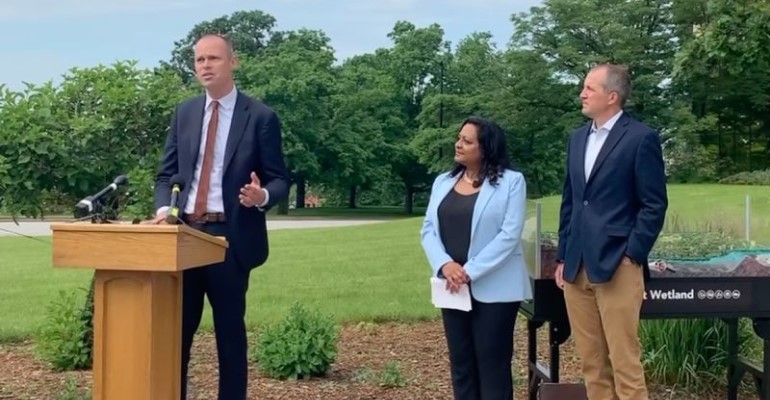
In an event June 11, U.S. Environmental Protection Agency Assistant Administrator for Water Radhika Fox, joined by Iowa Secretary of Agriculture Mike Naig and Rod Snyder, EPA ag adviser, announced $60 million over the next five years to fund nutrient reduction efforts through the Gulf Hypoxia Program. Hypoxia means low oxygen levels in water and can be caused by excess nutrients such as nitrogen and phosphorus. Hypoxia can impact ecosystems, killing fish and other wildlife, creating aquatic dead zones in severe areas.
EPA explains this funding, made possible through the Bipartisan Infrastructure Law, will deepen the agency’s collaboration with states and agricultural partners by supporting actions of the 12 member states of the Mississippi River/Gulf of Mexico Watershed Nutrient Task Force (Hypoxia Task Force) to reduce nutrient pollution.
“The Mississippi River and Gulf of Mexico watershed is an iconic ecosystem that millions of Americans depend on for drinking water, agriculture, recreation and economic development and it is essential that we reduce nutrient pollution that harms water quality,” says Fox.
With $60 million over the next five years, the Hypoxia Task Force will accelerate its work on the Gulf Hypoxia Action Plan. The funding will significantly expand and enhance capacity of the states to improve water quality in the Gulf and throughout the Mississippi/Atchafalaya River Basin. To support the work of the Task Force, EPA will also deepen its existing collaborations with the agricultural community, seek new partnerships and identify and elevate examples of producer innovation. EPA expects states will scale up implementation of nutrient reduction strategies
Nutrient loads from the Mississippi/Atchafalaya River Basin contribute to a low oxygen (hypoxic) “dead” zone in the northern Gulf of Mexico that is one of the largest in the world. The Hypoxia Task Force is a partnership established in 1997 to work collaboratively on reducing nutrient loads in the MARB and the Gulf’s hypoxic zone. Members and partners of the Hypoxia Task Force include five federal agencies, 12 states bordering the Mississippi and Ohio rivers, and the National Tribal Water Council on behalf of tribes; EPA and the state of Iowa serve as co-chairs. Multi-state sub-basin committees and a land grant university consortium are also key partners.
The HTF adopted a Gulf Hypoxia Action Plan in 2001, updated it in 2008, and adopted a revised coastal goal in 2015, which lays out specific steps needed to accomplish the goal of reducing, mitigating, and controlling hypoxia in the Gulf and improve water quality in the Basin. The current coastal goal is to limit the dead zone to no more than 5,000 square kilometers by 2035, using a dual nitrogen and phosphorus reduction strategy. In 2015, the HTF adopted an interim goal to reduce nutrient loading of nitrogen and phosphorous by 20% by 2025.
“Through the Hypoxia Task Force, states are working with federal partners to take on the challenge of implementing their Nutrient Reduction Strategies. These state-driven strategies have engaged and expanded partnerships for research, implementation and measurements while also developing and deploying innovative conservation practices,” says Naig. “This new funding will help improve water quality and meet the unique needs of each state as outlined in their Nutrient Reduction Strategies.”
The announcement includes a memorandum providing guidance for states under the new Gulf Hypoxia Program. This provides information on how EPA will award and administer the Gulf Hypoxia Program funds, highlights priorities for nutrient reduction, and provides flexibility for state specific activities.
EPA expects states will scale up implementation of nutrient reduction strategies with bold, systemic advances to accelerate nutrient load reductions. States will engage local communities in planning nutrient reduction projects to ensure that the water quality benefits of this program are realized by disadvantaged communities, and support use of conservation practices that are resilient and adaptable to changing climate conditions.
About the Author(s)
You May Also Like






